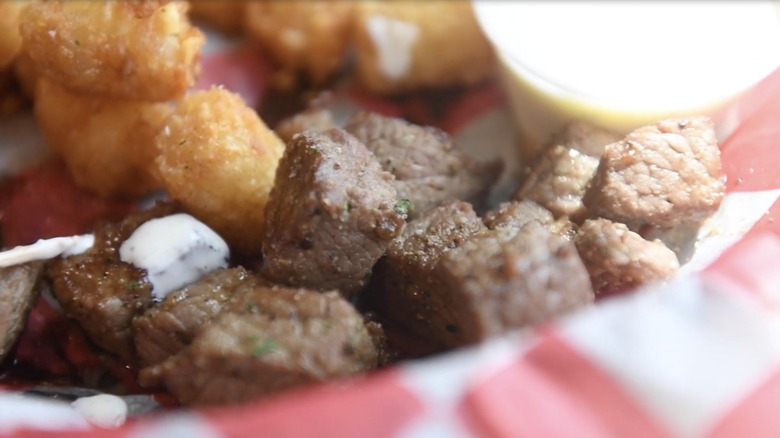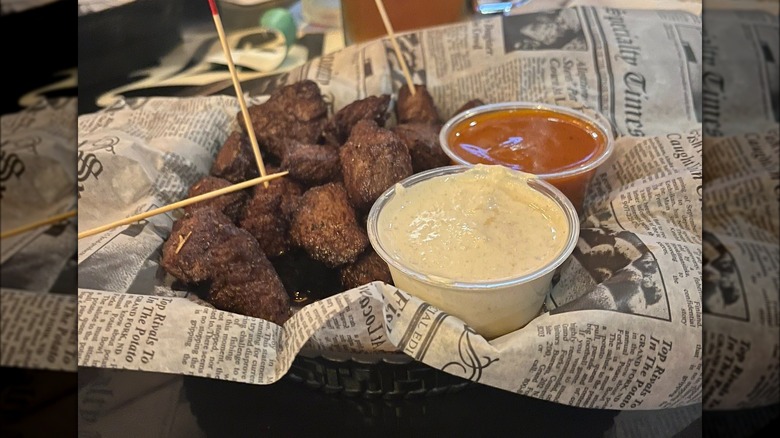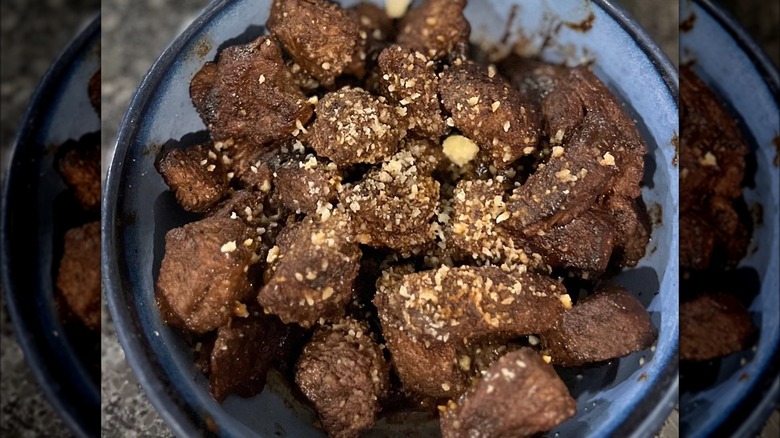What Is Chislic, And Why Is It Unheard Of Outside South Dakota?
Just outside Sioux Falls, in the southeastern corner of South Dakota, lies a tiny town called Freeman. It's situated at the heart of an area known as the "Chislic Circle," with the town itself reputed to be the chislic capital of America. If you've never heard of chislic, you're not alone, as it is little-known outside the Mount Rushmore State. Essentially, chislic consists of cooked, skewered, small cubes of meat. The cooking method and the type of meat used are somewhat debated; some insist that authentic chislic must be deep-fried mutton or lamb, while others agree that beef or venison chislic cooked on the grill is a suitable alternative.
The dish was a specific specialty of the town of Freeman for decades before it gradually began to spread to the surrounding areas of the region (hence, the Chislic Circle), and today, the entirety of South Dakota is associated with chislic. However, outside of the state, it remains quite unfamiliar. Those not from South Dakota might mistake chislic for shish kebab due to its similar appearance to the Turkish specialty, but it is considered unique. Seasoned, cooked, and served in the simplest of ways, chislic's fan base may be small, but it is certainly mighty.
From Germany to Russia to South Dakota
While small pieces of meat cooked on skewers are found worldwide, chislic is thought to have originated in Russia, but was named after the Turkic word "shashlyk" or "shashlik." Despite its origins, the dish is believed to have been brought to the Dakota Territory in the late 19th century by German-born immigrants. Back in the mid-18th century, Empress Catherine the Great, who was born in Germany, rose to power in Russia. During her reign, many Germans immigrated to her new land. By 1872, facing discrimination against their culture in Russia, many sought new lives in America and arrived in Freeman, South Dakota, due to its proximity to the Chicago, Milwaukee & St. Paul Railway Company line.
These travelers naturally brought their foods and recipes with them. While shashlik was primarily grilled over fire in Russia, the newly arrived Americans found a lack of firewood for such cooking in their new home. Instead, they began the practice of frying their meat in the fat of the sheep they raised for consumption. Over time, restaurants and bars began serving the dish that was once a staple among families and friends during celebrations. Chislic came to be seasoned simply with salt or garlic salt and served with Saltine crackers. In 2018, the South Dakota State Legislature passed a bill declaring chislic the official South Dakota State Nosh, solidifying its cultural significance in the state.
For the most part, chislic has stayed true to its origins
In the town of Freeman, traditional chislic is fried lamb served on a skewer alongside fried onions. In nearby Sioux Falls, the cooked meat is often served in baskets or plates with toothpicks as utensils, instead of on a skewer. Many immigrants who settled in southeastern South Dakota raised sheep, which likely accounts for the initial popularity of using sheep (mutton) or lamb as the meat source for chislic. However, today, beef and venison are also popular, provided the meat is cut into small, bite-size pieces, ideally no larger than the size of a quarter.
Chislic purists believe that real chislic should never be marinated, as this could detract from the inherent flavors of the meat (the star of the show, so to speak), and alter the traditional preparation methods. However, it's not uncommon today to find the dish not only marinated, but also served with dipping sauces.
The dish has become such an important symbol of history and South Dakotan culture that the town of Freeman now hosts an annual Chislic Festival. People from all over the country gather to enjoy protein-on-a-stick and celebrate the heritage of this special dish.



